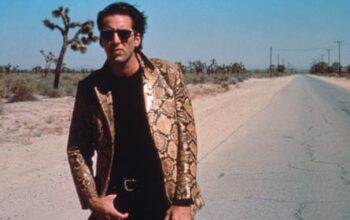
T
There are countless films featuring Godzilla available, originating from Japan and the US. This newest addition to the franchise ranks among the top. It is on par with the original 1954 film, the clever reboot Shin Godzilla from a few years ago, and my personal favorite, Godzilla vs Hedorah (1972), also known as Godzilla vs the Smog Monster. This film is notable for its inclusion of extras wearing white gogo boots, trippy sequences, and a catchy theme song titled “Save the Earth” in the English dubbed version.
Similar to the other two excellent Godzilla movies mentioned, this one succeeds by placing the impact of past events at the core of the narrative, ultimately telling a tale of humanity coming together to overcome and defeat an unexplainable force of devastation. The film, Minus One, begins in the final days of World War II, a particularly somber moment in Japanese history. The main character, Shikishima (played by Ryunosuke Kamiki), is tasked with a kamikaze mission but, consumed by fear and a natural desire to survive, he instead lands on Odo Island (a nod to Godzilla’s origins) to fabricate an engine malfunction.
The locals are all too familiar with Godzilla, a monstrous creature that rampages through the island, leaving death in its wake. Shikishima, paralyzed by fear, is unable to fight back once again. When he returns to Tokyo after the Allied firebombing, he discovers that his parents have been killed and his home is destroyed. Despite this devastation, he finds solace in a makeshift family with Noriko, a young woman who has also lost everything, and Akiko, a baby who Noriko was caring for when Akiko’s mother died in a bomb shelter. As time passes, their little family seems to be on the path to recovery along with the rest of the nation. However, there are other destructive forces at play, particularly in the testing of the H-bomb in Bikini Atoll.
The original Godzilla film portrayed the fear of destruction caused by the A-bomb in Hiroshima and Nagasaki, as well as concerns about nuclear testing in the Pacific. This was cited as a possible cause for Godzilla’s genetic mutation. In the modern movie Shin Godzilla, the blame is placed on institutions and international relations. However, it is ultimately the effective use of these same systems, along with knowledge of origami, that leads to Godzilla’s defeat. Unlike the American Godzilla films, where a deus ex machina like King Kong is often used, the hero in all three versions is not a giant monster.
In Godzilla Minus One, the most effective way to counter Godzilla involves citizens coming together and voluntarily sharing knowledge and forming a chain of command to use science to stop him. Shikishima and Noriko are mostly in the background, except for one heartbreaking moment when they are caught in Godzilla’s destruction. Director Takashi Yamazaki skillfully manipulates the audience’s emotions, aided by a powerful and minimalistic score by Naoki Satô. Yamazaki also effectively plays with scale, switching between the personal lives of the family and the immense size of Godzilla, who can easily destroy entire city blocks with a flick of his tail.
This version of Godzilla is not cute or friendly. He is full of anger and impossible to understand, appearing to have no reason for his actions, whether it be hunger, desire, or revenge. He is like a deity, simply existing as a being of destruction, as inevitable as the course of history itself.
Source: theguardian.com


